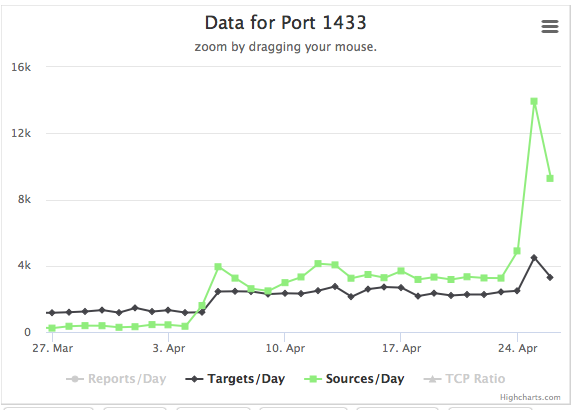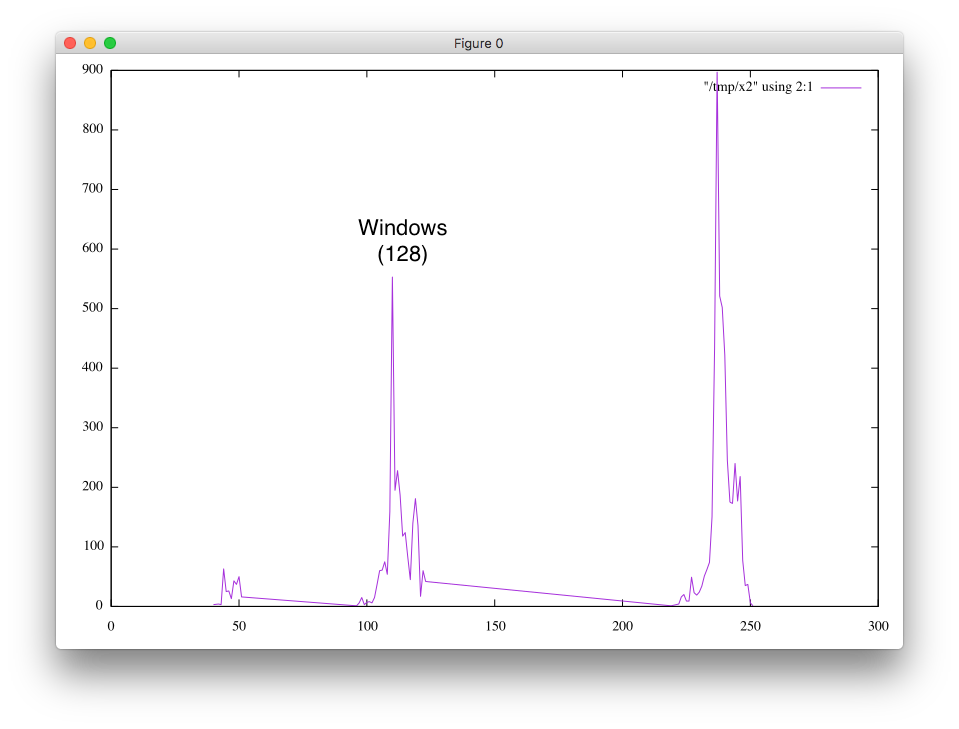If there are some unexploited MSSQL Servers With Weak Passwords Left: They got you now (again)
Setting up a Microsoft SQL server with a stupid simple password like "sa" for the "sa" user is hard. First of all, Microsoft implemented a default password policy that you need to disable. And then, when you finally Googled your way through how to disable it and turned it off with the next password reset, then it will take only minutes for your brand new shiny SQL Server to get compromised. Today, we received a number of reports of a sudden increase in these scans against port 1433 . As far as I can tell from honeypot data, the attacks are nothing special or new, just more of them.
A little bit odd is the distribution in TTLs. I am still trying to see if this is just an artifact in how I collected the data. Since MSSQL typically runs on Windows, I would expect the scans to originate from Windows systems that got compromised by this bot/worm. But instead, the majority of TTLs are just short of 255. So not even the Unix "standard" 64.
---
Johannes B. Ullrich, Ph.D. , Dean of Research, SANS Technology Institute
STI|Twitter|
| Application Security: Securing Web Apps, APIs, and Microservices | Orlando | Mar 29th - Apr 3rd 2026 |




Comments
Your TTL could be Solaris boxes? I mean the Solaris zero day (the one that got released recently) would be enough for a substantial bot net. Could also be FreeBSD (seem to recall something similar being released for that).
Anonymous
Apr 27th 2017
8 years ago
I am not a user (nor a fan) of that MSSQL product, but IMHO it would be a somewhat plausible reason for this kind of a scan.
Just me brainstorming... could be something completely different.
Anonymous
Apr 27th 2017
8 years ago
Also, there are a number of Linux/OS variants running SQL Server now, which could help explain the TTL spikes.
https://www.microsoft.com/en-us/sql-server/sql-server-2017
Phil
Anonymous
Apr 27th 2017
8 years ago